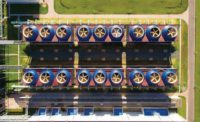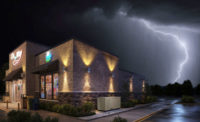Continuous improvement is vital within the heavy and industrial equipment and energy and natural resources industries. To maintain their competitive advantage, original equipment manufacturers (OEMs), equipment owners, and operators are always looking for ways to optimize production, reduce costs, increase efficiency, and improve safety.
For the past two years, and as a major driver through 2019, research company Gartner has described the “Intelligent Digital Mesh” as a consistent industry theme. “Intelligent” refers to how artificial intelligence (AI) has made its way into virtually every technology; “digital” blends the virtual and real worlds to create a digitally enhanced and connected environment; and “mesh” delivers digital outcomes from the connections between people, businesses, devices, content and services.
For example, to deliver highly integrated smart spaces, AI — in the form of automated things and augmented intelligence — is being used in combination with the Internet of Things (IoT), edge computing, and digital twins. This merging of multiple themes produces new opportunities and drives future technology disruption as underscored by the following three significant trends for the industrial equipment and energy & natural resources industries.
Internet of Things
One competitive differentiator involves using sensors with the industrial IoT to extract data and using the resulting information to derive powerful insights. The aim is to create an information layer that blends multiple horizons of data across the value chain for better planning control and decision-making. Many companies have already recognized the real payoff of specific equipment data tracking as they uncover insights capable of informing operational decisions.
The IoT is a powerful tool to help companies improve productivity and drive down costs. In fact, Mining Global states that 41% of mining operators have reported that they would use IoT to further automate business processes, and 44% say that it would help boost their competitive advantage through improved identification of cost savings and efficiency opportunities.
Similarly, in the heavy equipment industry, businesses that track machine data through the IoT are making positive impacts to their bottom and top lines through additional revenue streams. The constant collection and analysis of data related to usage, downtime, and maintenance needs is supported through embedded sensors and internet connectivity. For example, the health of off-road vehicles in rough terrains is constantly measured through sensors (i.e. pressure, load, temperature, fuel consumption, engine load, etc.) that provide OEMs with insight into recommended and required maintenance actions, based on the condition of the machine. Likewise, these sensors help equipment owners and operators better manage and control operating costs. By more precisely tracking each machine’s contributions to an organization’s bottom line, a better return on equipment investment is realized.
Digitization
An effective response to digital disruption is essential for a company’s competitiveness and enhanced equipment productivity. As digital transformation becomes mainstream, OEMs, equipment owners, and operators must embrace changes to their business models that take advantage of innovative approaches, such as digital analytics and digital twins.
Using advanced analytics to process big data into meaningful bites lets companies move away from responsive approaches toward more informed reactive maintenance strategies. OEMs, owners, and operators can use these strategies to better fulfill the continuous demands of reduced downtime, improved operational efficiency, optimized maintenance costs, effective forecasting, and enhanced production efficiency.
Today, companies are already investing in digital twin capabilities to monitor real-world assets, drive significant savings in maintenance and repair, and improve operations. By providing an excellent testing ground for innovative new ways of working, digital twins support a “fail fast, learn quickly” culture. In addition, the digital replica-modeling tool provides real-time monitoring and adjustment capabilities with component and equipment connectivity.
An increasingly popular enhancement to power generation is the energy industry’s use of digital twins to replicate digital versions of turbines. Because turbines must be able to operate in some of the harshest environments over many decades, costly unexpected failures must be avoided if at all possible. A digital twin can use various operating scenario simulations to uncover signs of non-optimal performance in advance — providing an indication of when an asset could fail and reducing the risk of unexpected downtime.
For the oil and gas industry, the digital twin is the dominant technology, which provides opportunities for performance improvement (i.e. system upgrades, potential output increase, etc.) and optimization, reduction of nonproductive time, and hazard prevention. With this technology, owners and operators can save money by planning and implementing corrective maintenance actions before equipment failure occurs. With the focus on reducing operating costs and increasing the safety of an aging infrastructure, digitization (3D) is the answer. Digital twins also can help oil and gas companies model drilling and extraction activities to determine the feasibility of virtual equipment designs, as well as plant turnaround schedules and maintenance priorities. In addition, no matter where an asset is located, its state and condition can be determined by gathering real-time data feeds from its sensors.
A game-changer within the mining industry will be led by Rio Tinto, a leading global mining group, with the development of the Koodaideri iron ore mine, which is set to be among the most technologically advanced in the world. The mine will be intelligent — designed with increased levels of digitization — helping to deliver a safer and more productive mine. By implementing a digital twin, Rio Tinto will be building a replica of the processing plant, which will be accessible in real time and have the capability to collect all data, from the design and build to commissioning and operations.[1]
Automation
Automation is transforming the labor market as companies look to improve equipment predictability, efficiency, and safety. Deloitte estimates that by 2035, approximately 35% of current jobs in the U.K. will be automated, and similar trends are expected in other parts of the world.
To monitor asset performance, mining companies are outfitting their fleets with diagnostic sensors and leveraging the collected data for opportunities to do things better, faster, smarter, and safer using automated equipment. For example, an international mining company has numerous autonomous dump trucks, each using GPS to move high-grade ore without a driver. Controlled by remote operators, driverless vehicles deliver loads more efficiently and with greater operational safety.
Heavy equipment manufacturers also are using automation to build better job sites. Some start with semi-autonomous versions but ultimately evolve toward full, driverless automation. Some bulldozers already sport fully automatic blade control and automated excavators. For the agricultural industry, automation is a growing trend. The exceptionally labor-intensive tasks in farming makes it an ideal niche for robotics and automation. In order to increase production efficiency and the quality of agricultural products, smart farming and precision agriculture involves the integration of advanced technologies into existing framing practices. Over the past couple of years, rapid growth in the use of robotic processes to automate repetitive human activities has resulted in reduced labor intensity and enhanced safety.
As the automation of physical operations and the digitization of assets continue to grow, we likely will see further adoption of autonomous vehicles, drones, 3D printing, automated drilling/tunnel boring systems, smart sensors, and wearable technologies. Digitally enabled hardware tools are being deployed to perform or improve activities that have traditionally been carried out manually or with human-controlled machinery. The expansion of automation allows companies to better manage critical business issues faster and more intelligently.
These three industry trends can help companies optimize their production processes while reducing costs and improving safety. By successfully strategizing around these trends, companies may be able to maintain or gain a significant edge over the competition.




